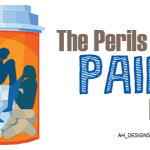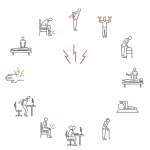Naltrexone, an opioid antagonist, is used to decrease cravings in both alcohol use disorder and opioid use disorder. It also dampens the effects of opioids. When used to treat opioid use disorder, the patient needs to be completely opioid free before taking it, or naltrexone may cause withdrawal. The injectable form of naltrexone lasts 30 days and better enables adherence than the oral form. But it isn’t free of adherence concerns, because a patient may not show up for their next injection, Dr. Stoller acknowledged. Also, patients can still become impaired using alcohol, but it won’t feel good, he notes.
Methadone, for opioid use disorder, is a full-opioid agonist that—depending on the dose—treats withdrawal, reduces craving and blocks the effect of taking an opioid. It can only be given at one of the roughly 1,600 opioid treatment programs in the U.S.
Rheumatologists with patients in the hospital who are on methadone have to coordinate with these programs upon treatment admission, throughout the admission and especially upon discharge, because methadone cannot be prescribed by a discharging physician.
Methadone is the most highly regulated medication in medicine, Dr. Stoller said. Treatment programs have to provide services as supervised dosing, allowing patients to earn take-home doses; counseling; and drug testing; and assistance to meet other rehabilitation goals.
“The quality and quantity of services can vary across opioid treatment programs, so there may be some in your area that provide more comprehensive treatment that you’d want to direct patients to,” he said. Patients who use sedatives, such as benzodiazepines, can still be sedated, “so it’s important to pay attention to those abuse problems, as well.”
Although science has demonstrated good outcomes for patients taking methadone for decades, the drug still suffers from false perceptions. It’s often seen as a crutch or as substituting one drug for another, Dr. Stoller said.
He cautioned that patients on methadone get an analgesic effect for only a few hours and may still need pain medication. These patients may even need opioids after a substantial injury or post-surgically—and possibly a higher-than-normal dose due to cross-tolerance.
Dr. Stoller also cautioned against short-term treatment with methadone. “If somebody goes off of these medications within a year, there’s a very high likelihood of relapse,” he said. “The problem is, after you are off of these … agonist medications, the person is much more susceptible to overdose.”
Buprenorphine, another opioid use disorder treatment, is a partial agonist with a ceiling to its respiratory depressive effects, making it safer. Its formulation discourages diversion to illicit use by crushing pills. An analysis of data from Massachusetts found treating addition with buprenorphine or methadone led to lower monthly Medicaid costs, fewer relapses and a lower mortality rate, Dr. Stoller said.1



